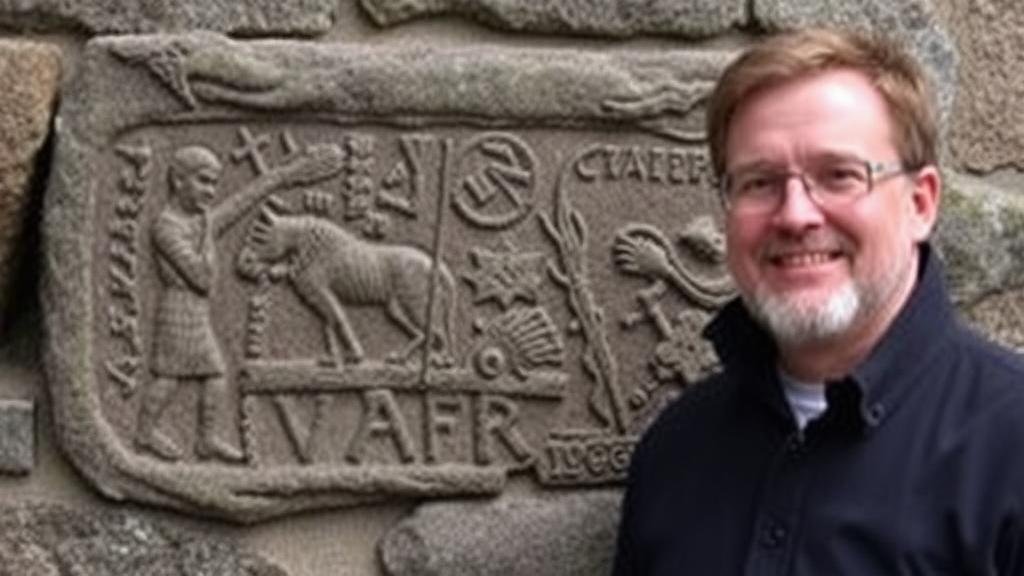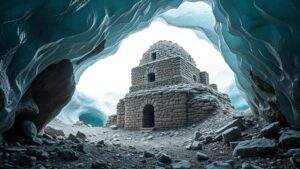Searching for the identity of the creators of the “Rosetta Carvings” in Scotland.
Searching for the Identity of the Creators of the Rosetta Carvings in Scotland
The Rosetta Carvings, an intriguing set of ancient symbols found in Scotland, evoke a sense of mystery among historians and archaeologists. These carvings, believed to date back to the Neolithic period, serve as a rich tapestry of Scotlands prehistoric past. Their creators remain largely unidentified, yet the quest to understand their origins reveals vital insights into Scotland’s early inhabitants.
The Origins of the Rosetta Carvings
Discovered on a remote stretch of the west coast of Scotland, the Rosetta Carvings are etched into granite stones. Unlike the more famous Rosetta Stone in Egypt that helped decode hieroglyphs, the purpose and meaning of these Scottish carvings remain a puzzle. Researchers believe they were created around 4000 to 2500 BCE, a period that marks significant cultural and technological development in prehistoric Britain.
Characteristics of the Carvings
The Rosetta Carvings feature a variety of geometric shapes, spirals, and crescent motifs. Analysis indicates that these designs likely held symbolic meaning rather than functional utility. In comparison, similar symbols found across Europe, such as those in Ireland and the Isle of Man, suggest possible shared cultural connections or trade networks.
Theories About the Creators
Several theories have emerged regarding the identity and culture of the creators of the Rosetta Carvings:
- Neolithic Farmers: Many experts propose that the carvings were made by Neolithic agricultural communities who settled in the region. They may have used these symbols in rituals or as territorial markers.
- Celtic Tribes: Another theory suggests that the symbols were created by early Celtic tribes who inhabited the area. This connection is often made due to parallels with known Celtic symbols found throughout the British Isles.
- Spiritual Practices: Some researchers argue that the carvings served a ritualistic purpose, potentially related to spirituality and the cosmos, reflecting the creators understanding of their environment.
The Search for Evidence
The search for definitive evidence regarding the identity of the creators is ongoing. Archaeologists have conducted numerous excavations in the vicinity, yet findings remain sparse. Radiocarbon dating of nearby artifacts indicates a sophisticated society was present, though no direct links to the carvings have been established.
Historical Context and Comparative Studies
To understand the Rosetta Carvings in a broader context, historians frequently compare them with other Neolithic art forms worldwide. For example, similar stone carvings in Scandinavia, known as rock art, display motifs that suggest a commonality in human expression and societal organization. e parallels highlight not only the creativity of ancient peoples but also their interconnectedness.
Potential Questions and Concerns
As researchers delve deeper into the mystery of the Rosetta Carvings, various questions arise:
- What were the specific rituals or beliefs represented in the carvings?
- How do these carvings relate to other known artifacts from the same period?
- What technological methods did the creators possess to execute such intricate designs?
Addressing these questions requires multidisciplinary efforts, combining archaeology, anthropology, and even advances in technology, such as 3D scanning and chemical analysis of the stones.
Conclusion and Actionable Takeaways
The Rosetta Carvings remain an enigmatic piece of Scotlands historical puzzle. While the identities of their creators may be shrouded in mystery, they offer a unique glimpse into the artistic expressions and social structures of ancient societies.
For those interested in exploring this topic further, consider the following actions:
- Visit archaeological sites in Scotland to observe similar carvings and artifacts firsthand.
- Engage with local historians and archaeological societies to learn more about ongoing research.
- Explore academic journals and publications focused on prehistoric art and culture for deeper insights.
As investigations continue, the quest to unravel the mystery of the Rosetta Carvings not only enriches our understanding of history but also underscores the timeless human desire to connect with our origins.


